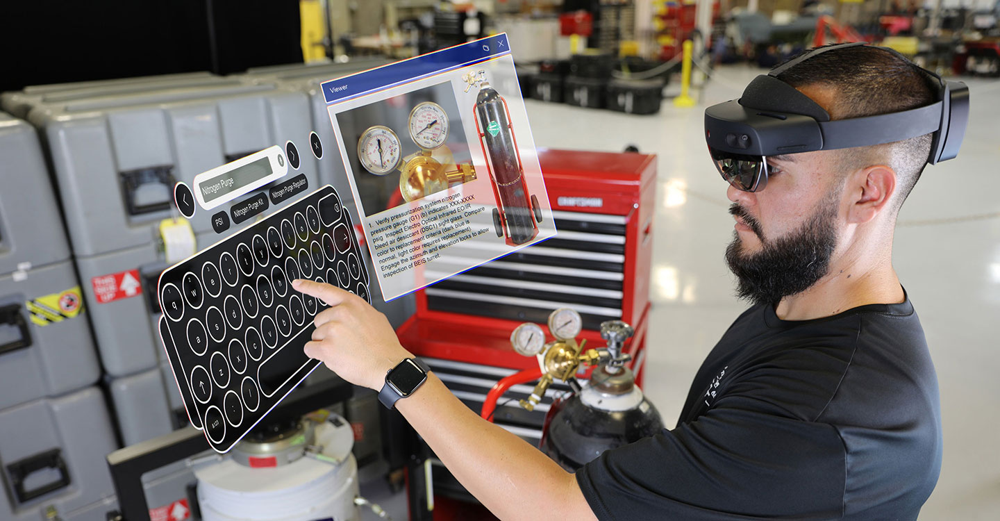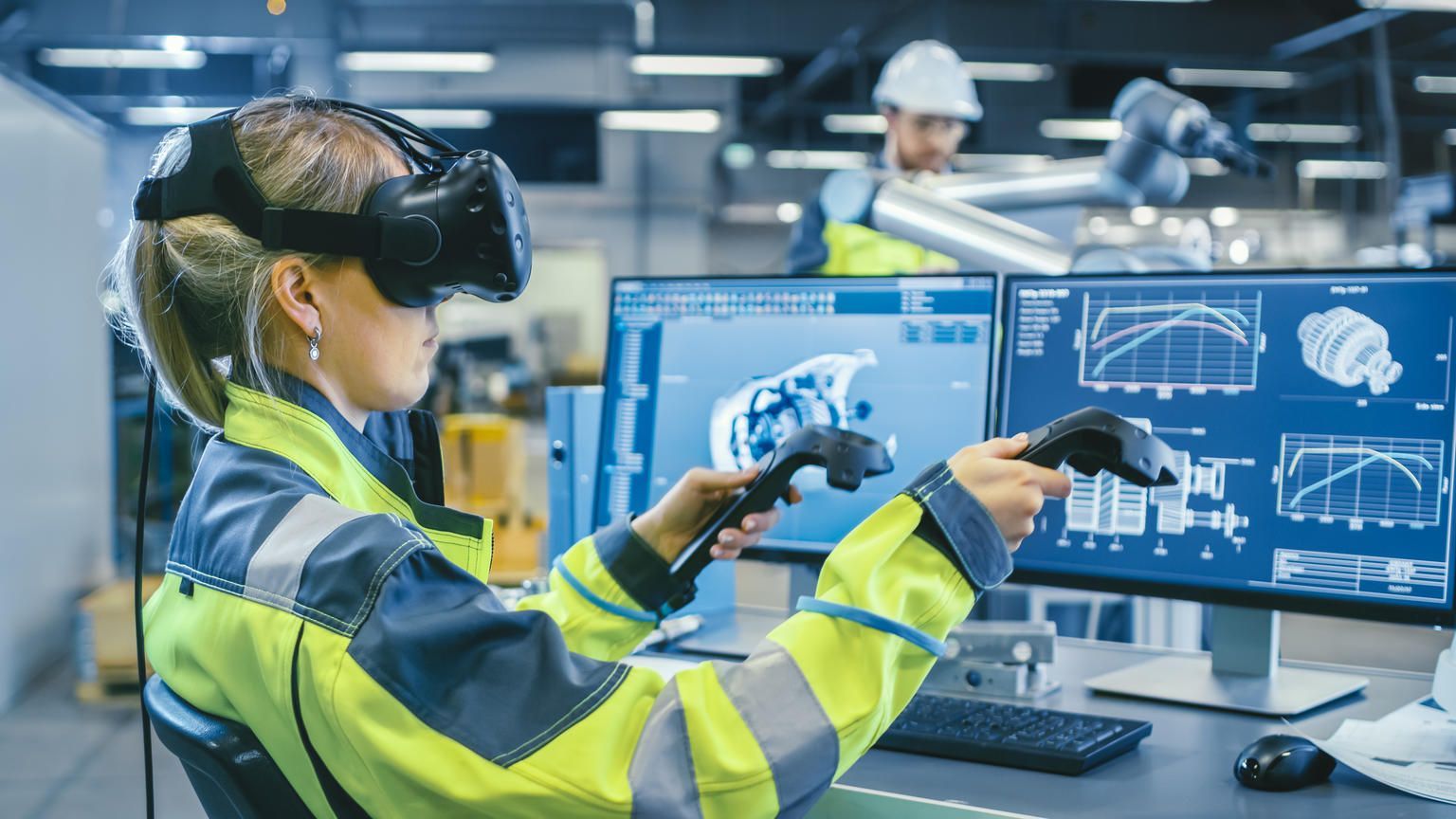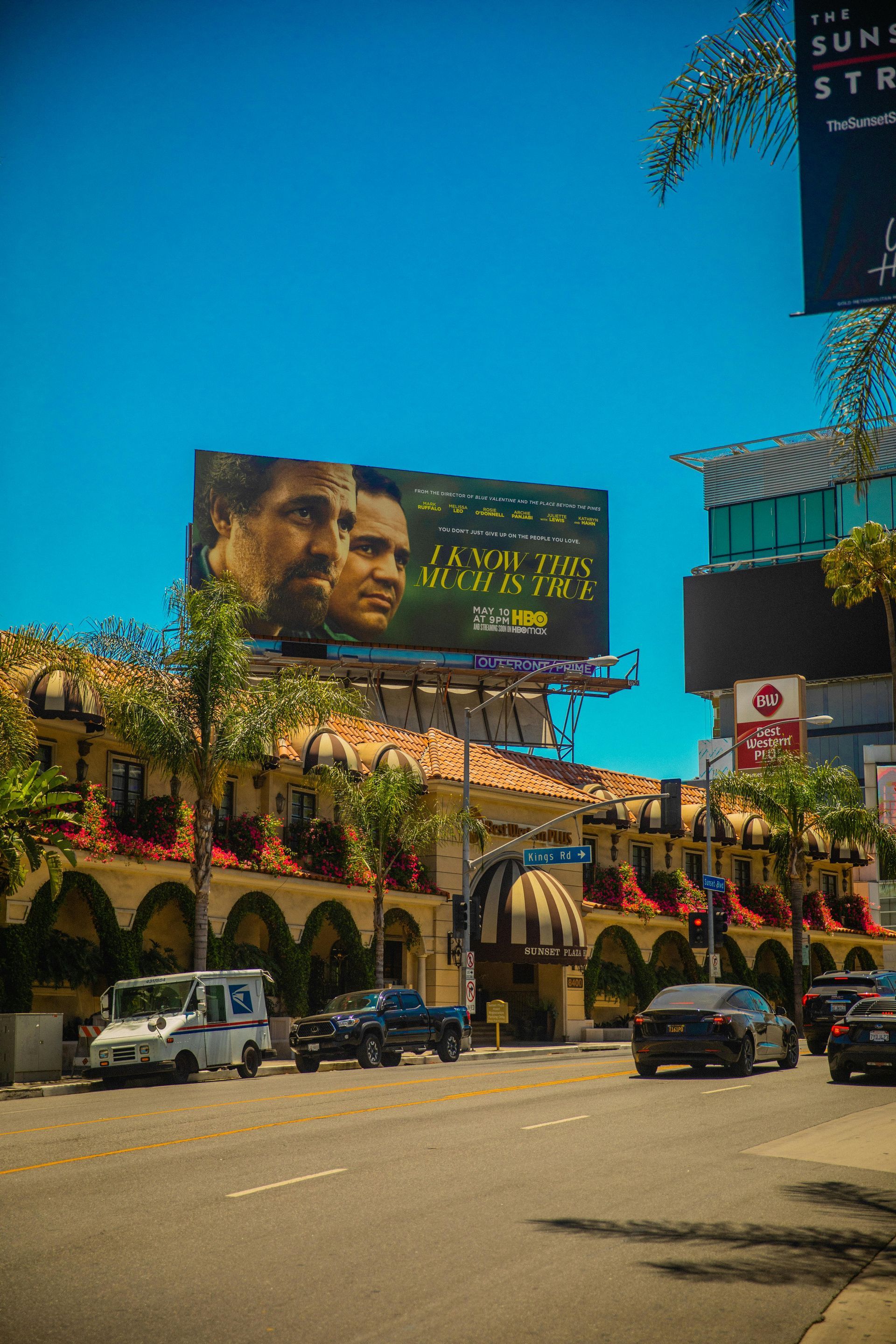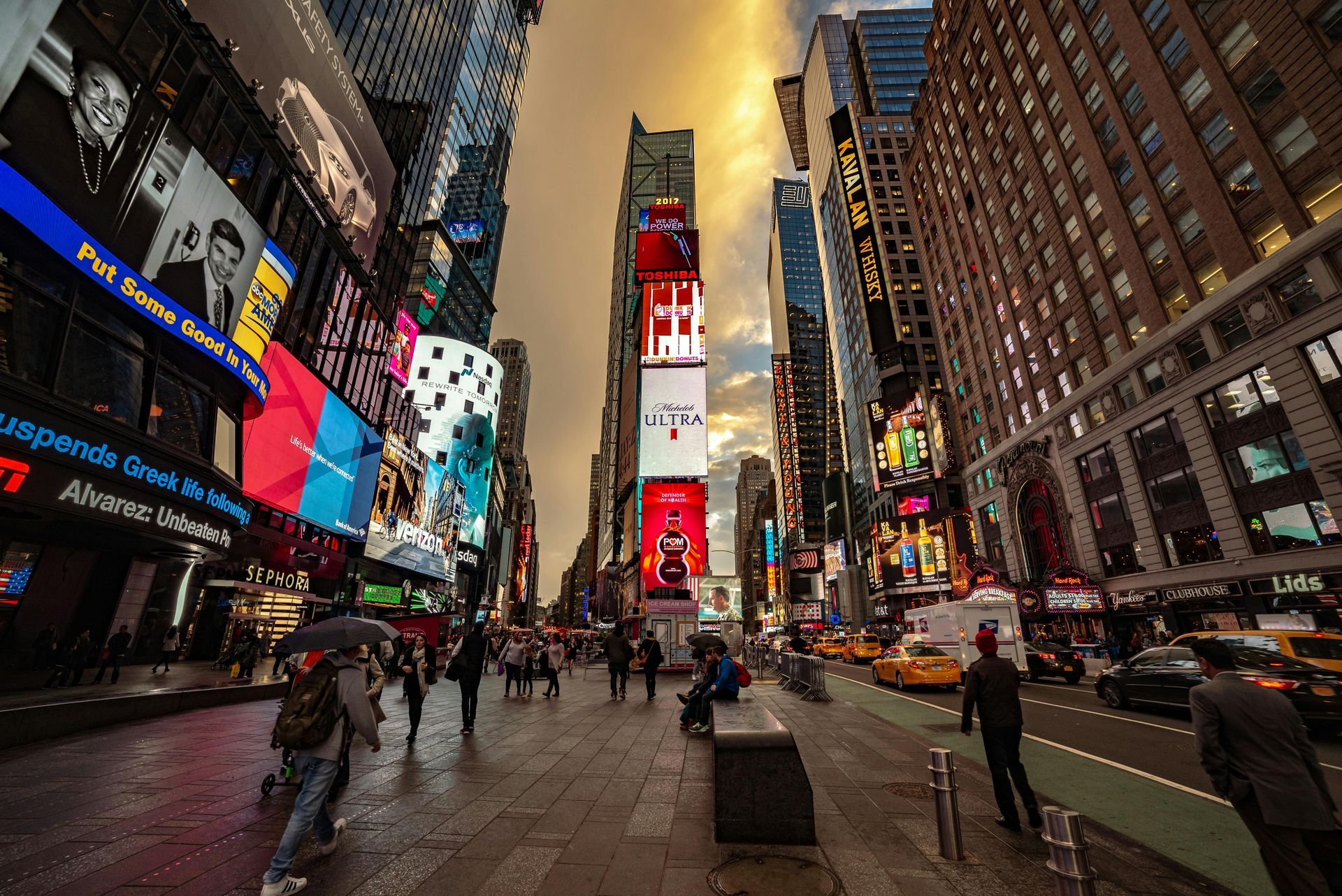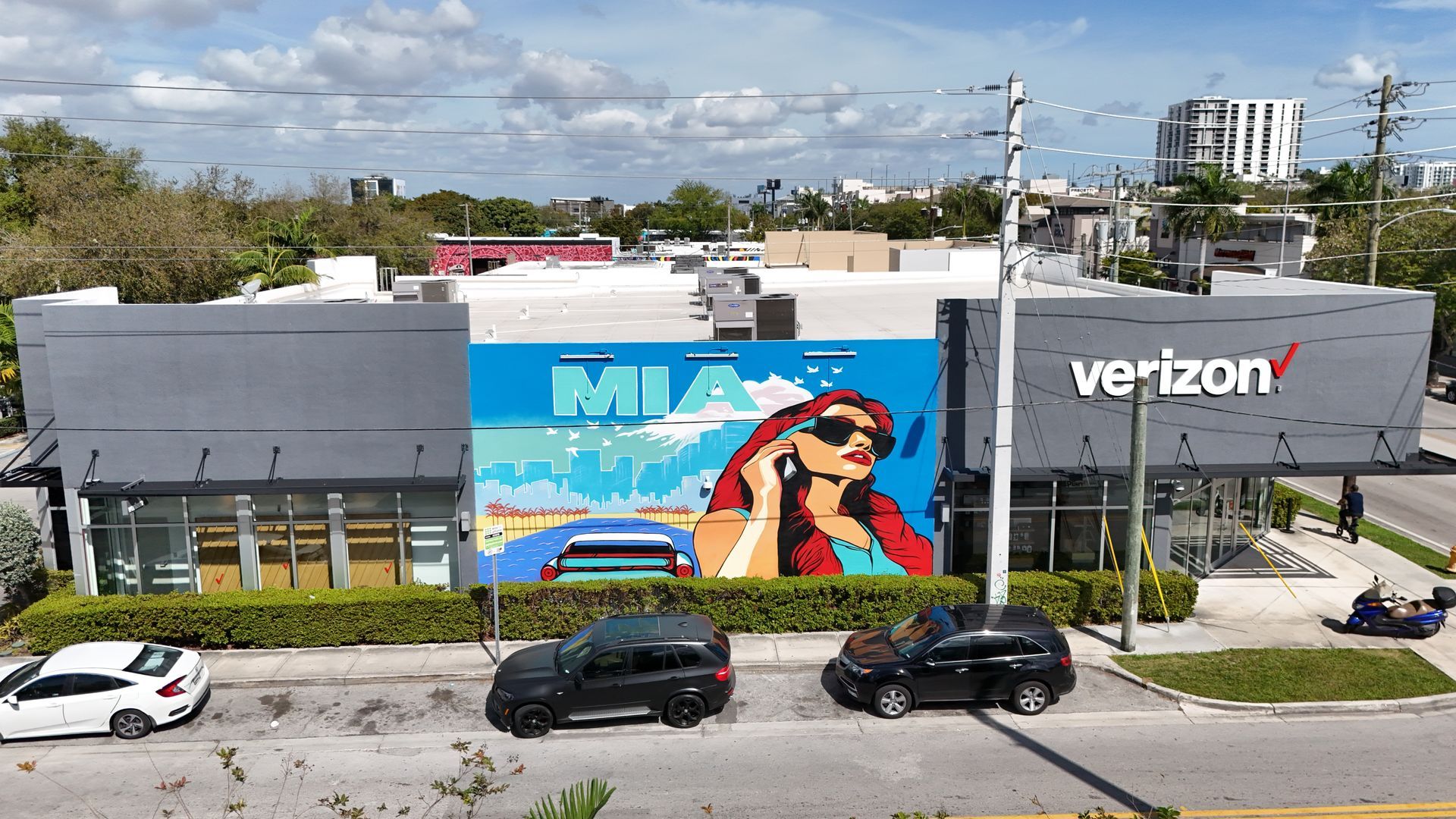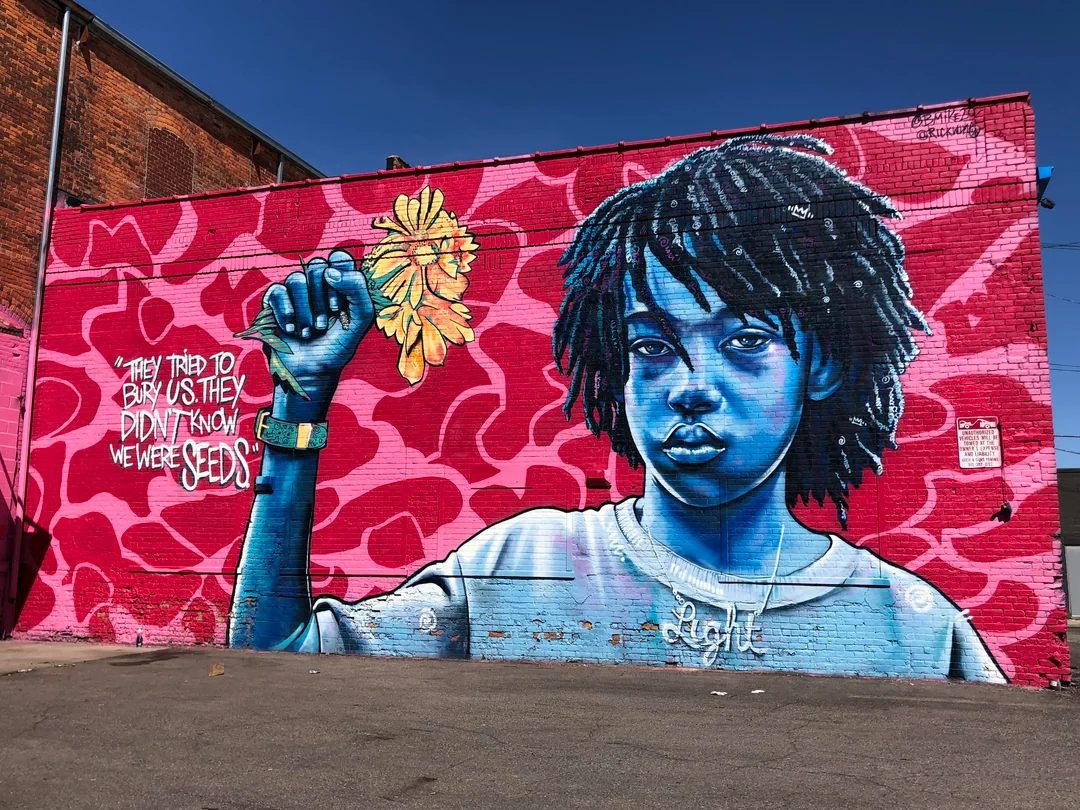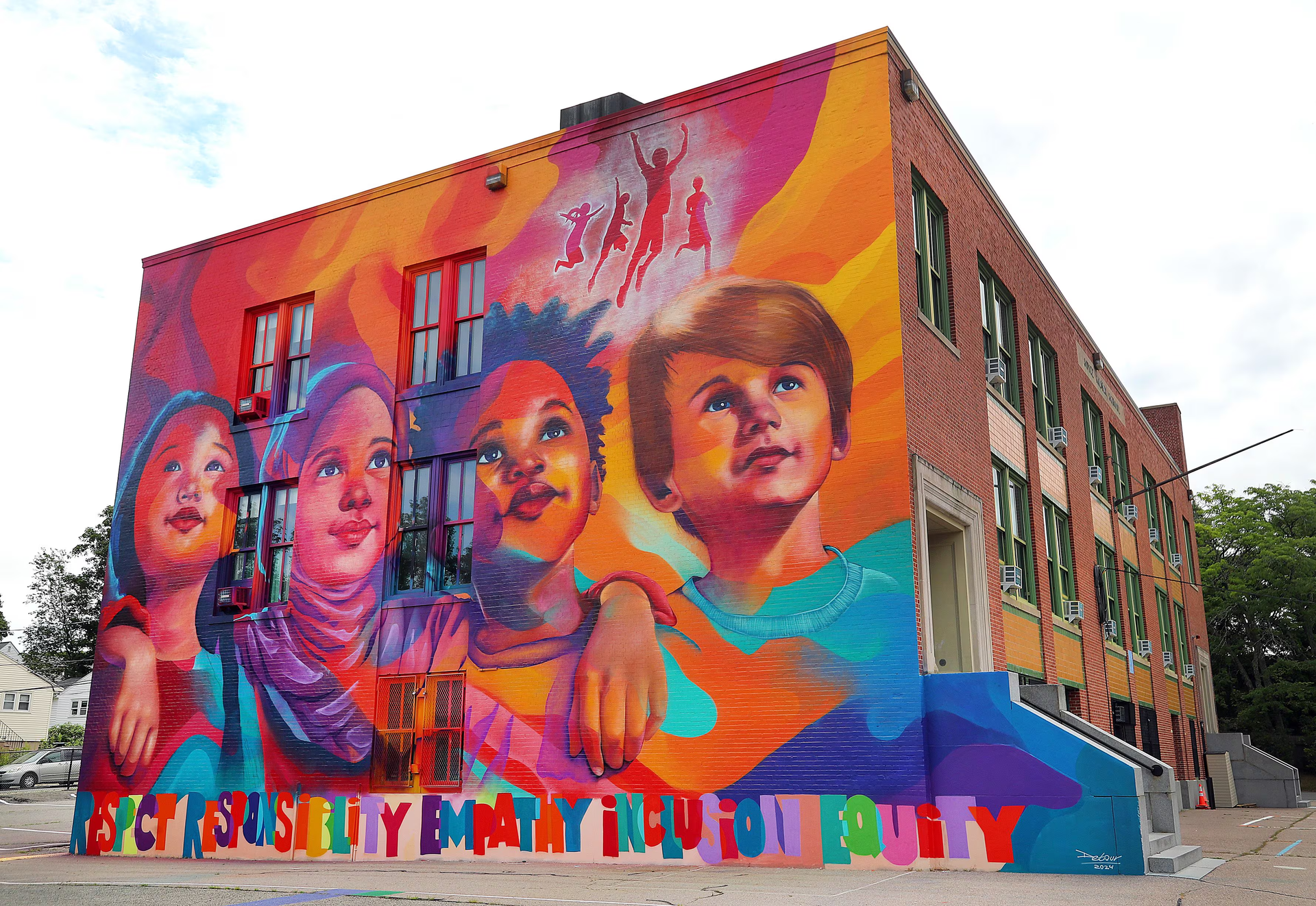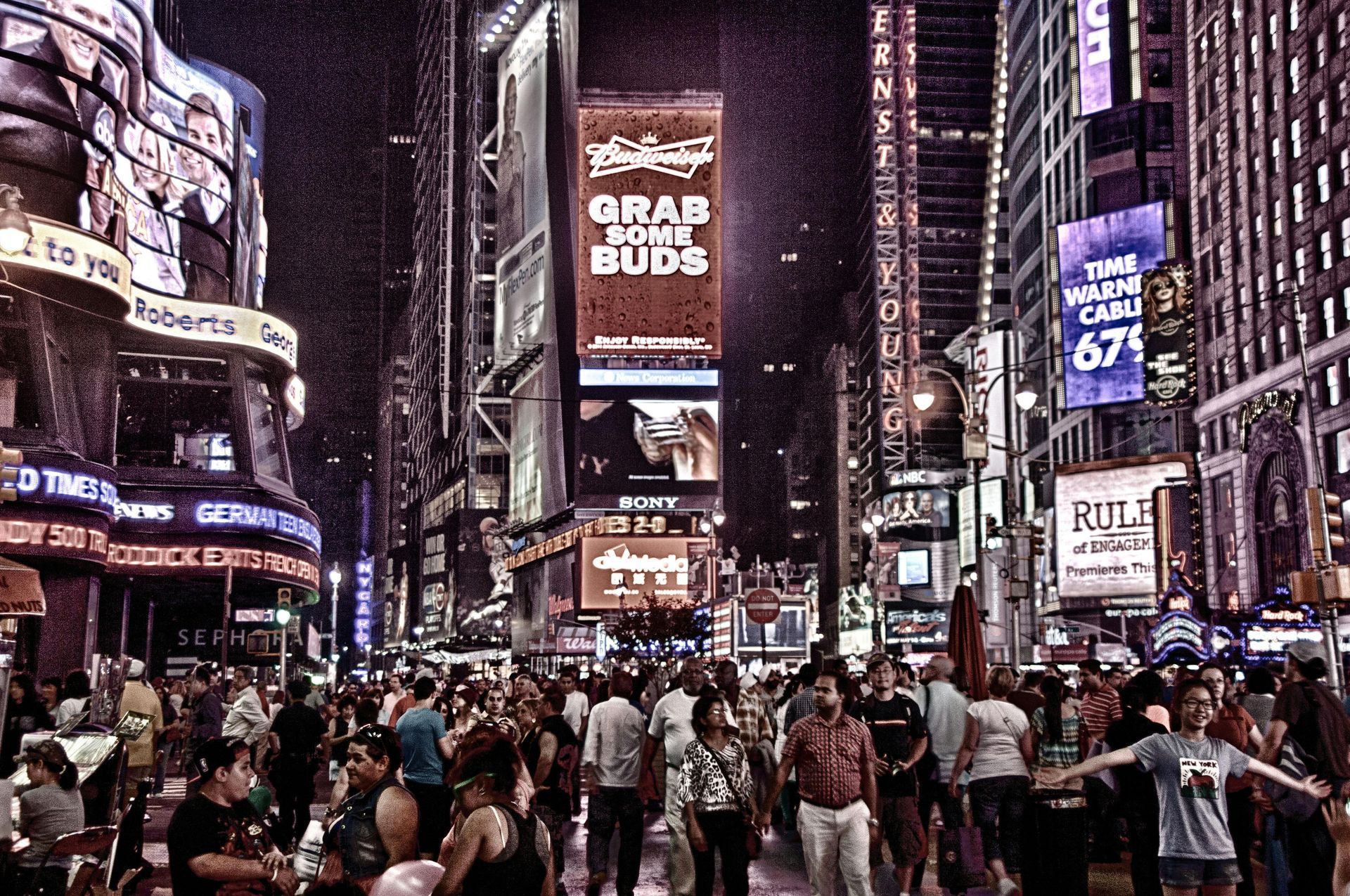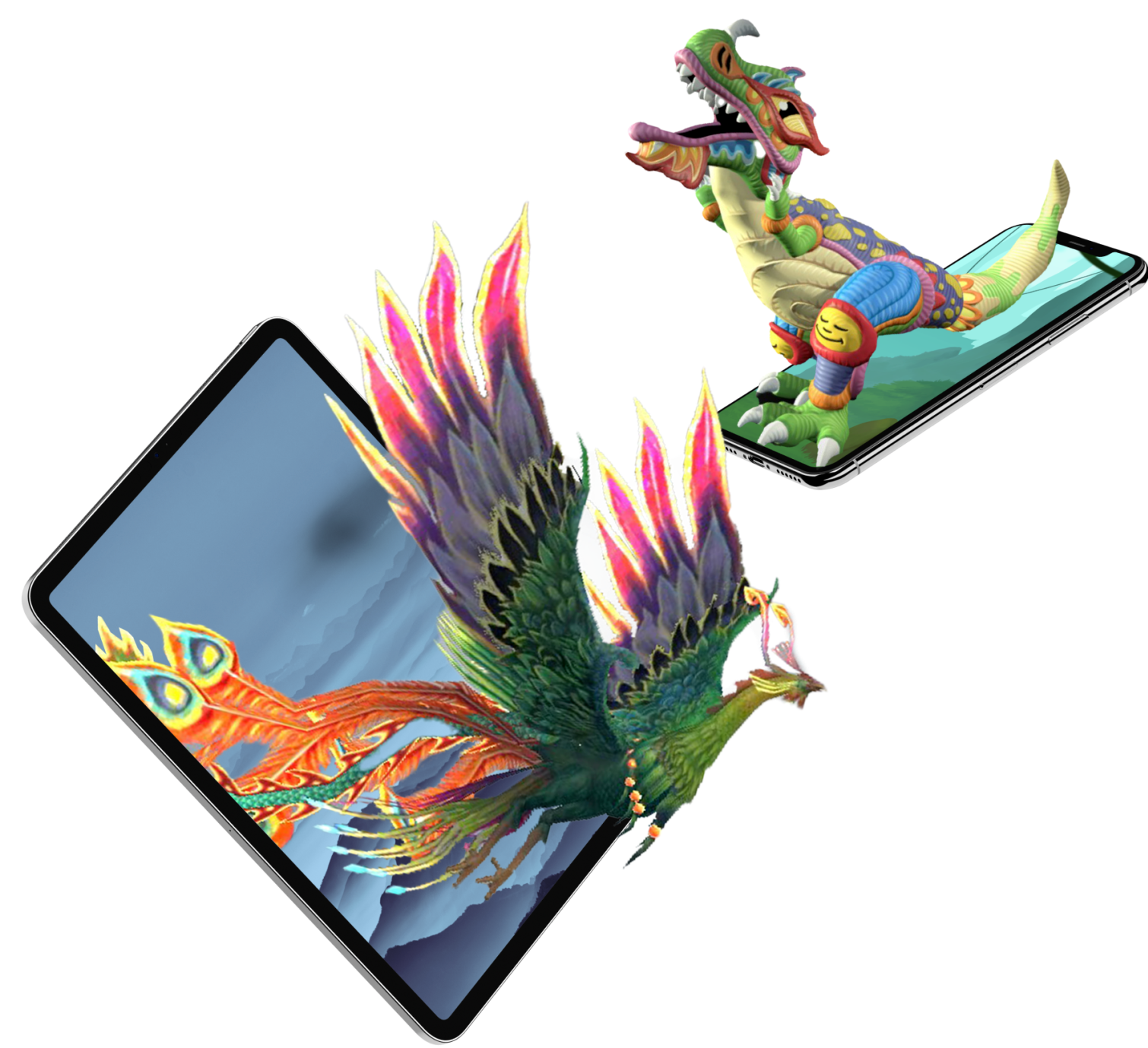AR Murals for Public Art: Blending Art and Technology
In the evolving landscape of urban spaces, a revolutionary form of expression is taking shape—one that marries the timeless tradition of public murals with cutting-edge augmented reality technology. AR murals perfectly embody how art and technology have developed a symbiotic relationship. Technology provides new tools and platforms for artistic expression, while art challenges the perception and application of technology, leading to innovative and immersive experiences.
This fusion transforms city walls from static canvases into dynamic, interactive storytelling platforms that engage audiences in unprecedented ways. As smartphones become ubiquitous and AR applications more sophisticated, the potential for these digital-physical hybrid artworks continues to expand, offering exciting possibilities for artists, communities, and urban planners alike.
The Evolution of Public Art in the Digital Age
From Cave Paintings to Digital Canvases
Public art has always served as a cultural timestamp, reflecting societies' values, struggles, and aspirations throughout history. Public artistic expression has continuously evolved alongside technological advancements, from ancient cave paintings to Renaissance frescoes to modern street art.
In the 20th century, murals became powerful tools for social commentary and community identity. Movements like Diego Rivera's Mexican muralism and the community murals of the 1960s and 1970s in the United States demonstrated how public art could transform spaces and create dialogue around important social issues.
Today, we stand at another pivotal moment in this evolution. Digital technology has expanded the definition of a "canvas," allowing artists to create works that exist simultaneously in physical and virtual realms. AR murals represent the natural next step in this progression. They maintain traditional murals' physical presence and site-specificity while incorporating dynamic digital elements that can change, respond to, and interact with viewers.
The Technological Foundation of AR Murals
Augmented reality overlays digital content onto the physical world, creating a blended experience viewed through smartphones, tablets, or AR glasses. For murals, this typically involves:
- Image recognition technology that allows AR applications to identify specific murals or elements within them
- 3D modeling and animation that brings static images to life
- Interactive programming that enables viewer participation and influence over the artwork
- Geolocation features that can trigger different experiences based on viewer position or time of day
The accessibility of these technologies has democratized the creation of AR art, allowing artists with varying levels of technical expertise to participate in this emerging medium, often through collaborations with developers and technologists.
How AR Murals Transform Public Spaces
Creating Multi-layered Narratives
Traditional murals are limited by their two-dimensional, static nature. AR technology shatters these limitations, allowing artists to create multi-layered narratives that unfold or respond to viewer interaction over time. This dimension of storytelling creates deeper engagement and can communicate complex ideas in more nuanced ways.
For example, an AR mural depicting a neighborhood's history might begin with indigenous inhabitants and then transition through various waves of immigration and development as viewers move their phones across the wall. Historical figures might share their stories directly through audio narration, or buildings might transform to show architectural changes over the decades.
Interactivity and Viewer Participation
Perhaps the most revolutionary aspect of AR murals is their ability to make viewers active participants rather than passive observers. Interactive elements might include:
- Characters that respond to viewer movements or gestures
- Hidden elements that are revealed only through exploration
- Crowdsourced content that allows community members to contribute to the artwork
- Gamified experiences that reward engagement with educational content or community resources
This interactivity transforms the traditionally one-way experience of viewing public art into a two-way conversation between the artwork and its audience.
Accessibility and Inclusivity
AR elements can make public art more accessible and inclusive by:
- Providing audio descriptions for visually impaired individuals
- Offering translations in multiple languages
- Including sign language interpretations
- Providing historical context or artistic explanations for those unfamiliar with certain references or techniques
These features help ensure that public art serves its true purpose of being available and meaningful to all community members.
Leading Examples of BrandXR's AR Murals
Electrifly Detroit Augmented Reality Mural Festival
Electrifly Detroit exemplifies how AR can transform an entire city's art scene. This summer-long Augmented Reality Mural Festival ran from June 1st through September 4th, 2021, creating an innovative citywide gallery experience. Art enthusiasts could download the free Electrifly Augmented Reality Art App and freely explore public murals. The simple process of downloading the app and scanning murals brought static art to life in immersive 3D.
What made this festival particularly notable was its impressive roster of world-renowned artists, including Hubert Massey, Chris Dyer, Ghostbeard & Patch Whisky, Phybr, Armageddon Beachparty, Ouizi, Mike Han, VYAL, Ricky Watts, Olivia Guterson, Wendy Popko, Chris Turner, and El Cappy. This diversity of artistic styles demonstrated AR's versatility as a medium that can enhance any aesthetic approach.
Hands of Peace for POW! WOW! Hawaii
This collaboration between Electrifly (BrandXR's immersive art and merchandise brand), Rotary International, artist Luke DeKneef, and POW! WOW! Hawaii showcases how AR murals can serve both artistic and social purposes. As one of the pioneering projects in the AR mural space, "Hands of Peace" helped establish BrandXR as an innovator in this emerging field.
The project demonstrates how AR murals provide brands with memorable "Instagram-worthy" experiences that generate significant user-created content and build loyal followings. This social media integration highlights how AR murals naturally bridge physical community spaces with digital social environments, creating marketing opportunities while enhancing public spaces.
Award-Winning Orlando Game Space Augmented Reality Mural
The "Virtual Visions" mural represents a sophisticated integration of traditional and digital art forms. Created by artist Chaya Av with projection, video, and sound elements by Jesse James Allen, this award-winning installation showcases the multidisciplinary collaboration that makes the most compelling AR murals possible.
Available through the Electrifly app, this project demonstrates how gaming aesthetics and technologies can be incorporated into public art. It creates experiences that appeal particularly to younger, tech-savvy audiences while still engaging traditional art viewers. This project's recognition highlights the growing acceptance of AR murals in mainstream art circles.
Alabama's Largest Hand-Painted Augmented Reality Mural
"Steel Magnolias," located in Birmingham, is an impressive testament to how AR can enhance storytelling and historical education in public art. At 240 feet, this massive hand-painted mural created by Main Street, Inc. and local artist Megan McCullum of Blank Space Bham honors influential Alabama women, including Helen Keller, Rosa Parks, Coretta Scott King, and Harper Lee.
The project's AR elements, accessible through the Electrify app, transform static portraits into interactive experiences that reveal each woman's story and impactful quotes. Special features include native Alabama flowers and quilt patterns honoring the G's Bend quilters. Perhaps most remarkable is the inclusion of historical video footage of Helen Keller, provided by the Helen Keller Institute for the Blind.
This project demonstrates how AR murals can simultaneously celebrate local heritage, engage community members (who participated in the painting), and provide educational content. Main Street, Inc.'s female-driven team used the project to connect with their Alabamian heritage while tracking success through app downloads and extensive media coverage.
Benefits for Artists, Communities, and Cities
For Artists
AR murals offer artists expanded creative possibilities and new revenue streams. Artists can:
- Update their works remotely without physical intervention
- Create experiences that would be impossible with paint alone
- Collect data on how audiences interact with their work
- Potentially monetize digital elements through app purchases or subscriptions
- Reach wider audiences who might share compelling AR experiences on social media
For Communities
Communities benefit from AR murals through:
- Increased cultural tourism and foot traffic for local businesses
- Educational opportunities that make local history and culture more engaging
- Community building through shared experiences and participatory elements
- Preservation of cultural heritage through digital documentation
- Opportunities for digital literacy development, particularly among youth
For City Planners and Public Art Programs
AR murals present unique advantages for urban planning and public art initiatives:
- More dynamic use of limited public space
- Ability to refresh content without new construction or painting
- Potential for gathering anonymized data about public space usage
- Lower environmental impact compared to traditional materials
- Flexibility to adapt content for different events or seasons
Challenges and Considerations
Despite their exciting potential, AR murals face several challenges:
Technical Barriers
- Ensuring reliable access to internet connectivity in public spaces
- Creating intuitive user experiences for people with varying levels of tech literacy
- Maintaining compatibility across different devices and operating systems
- Addressing battery drain concerns for resource-intensive AR applications
Equity and Access
- Ensuring that AR elements don't exclude those without smartphones or technical knowledge
- Providing alternative experiences for those who cannot use AR technology
- Balancing digital and non-digital elements so the physical mural remains meaningful on its own
Maintenance and Longevity
- Developing sustainable approaches to updating and maintaining digital content
- Addressing the potential obsolescence of current AR platforms
- Ensuring preservation of digital elements for future generations
- Weatherproofing physical components like QR codes or NFC tags
Privacy and Data Concerns
- Establishing transparent policies about data collection from users
- Addressing potential surveillance concerns in public spaces
- Balancing personalization with privacy protection
The Future of AR in Public Art
As technology continues to advance, we can anticipate several exciting developments in the AR mural space:
Integration with Smart Cities
As cities increasingly incorporate IoT (Internet of Things) technology, AR murals could connect with other smart city systems. Imagine murals that respond to traffic patterns, air quality, or local events, creating a responsive urban environment that uses art to communicate between city systems and residents.
Advancements in AR Glasses and Wearables
As AR glasses become more mainstream, viewing AR murals will become more seamless and immersive. Rather than holding up a phone, viewers will simply look at murals through their glasses to see the digital elements come to life, creating a more natural and integrated experience.
Artificial Intelligence and Generative Elements
Machine learning algorithms could allow AR murals to evolve based on viewer interactions, creating truly unique experiences for each visitor. AI can also generate personalized content based on viewer preferences or backgrounds, making public art more relevant to diverse audiences.
Cross-Platform Experiences
Future AR murals might extend beyond single locations, creating connected experiences across multiple sites or cities. For example, a mural in New York might interact with a sister mural in Tokyo, allowing for global collaborative art experiences that transcend geographical boundaries.
Conclusion
AR murals represent far more than a technological gimmick or a passing trend—they embody the fundamental relationship between art and technology that has driven human creativity throughout history. Blending physical and digital realms creates new possibilities for expression, engagement, and community building in public spaces.
As artist and technologist Gene Kogan noted, "The most interesting art being made today exists at the intersection of different fields, where the tools of one discipline are applied to the concepts of another." AR murals exemplify this intersection, combining digital technology with the ancient human impulse to create public art that reflects our shared experiences and aspirations.
For cities and communities looking to revitalize public spaces, foster cultural engagement, and embrace innovation, AR murals offer a compelling path forward that honors public art traditions while embracing the possibilities of our increasingly digital future. As these technologies become more accessible and artists continue to push creative boundaries, we can expect AR murals to play an increasingly important role in how we experience and interact with our shared urban environments.
In this symbiotic relationship between art and technology, each continues to challenge and enhance the other, creating experiences that would be impossible through either medium alone. AR murals represent how this relationship can transform our public spaces into more engaging, inclusive, and dynamic environments that reflect the complexity and possibility of contemporary life.
TALK TO A PRO
We're here to bring your brand to life!
Stay Connected with BrandXR
Create Augmented Reality for Free!
Create, Publish, and Measure 3D Augmented Reality Experiences Without Having to Code.
